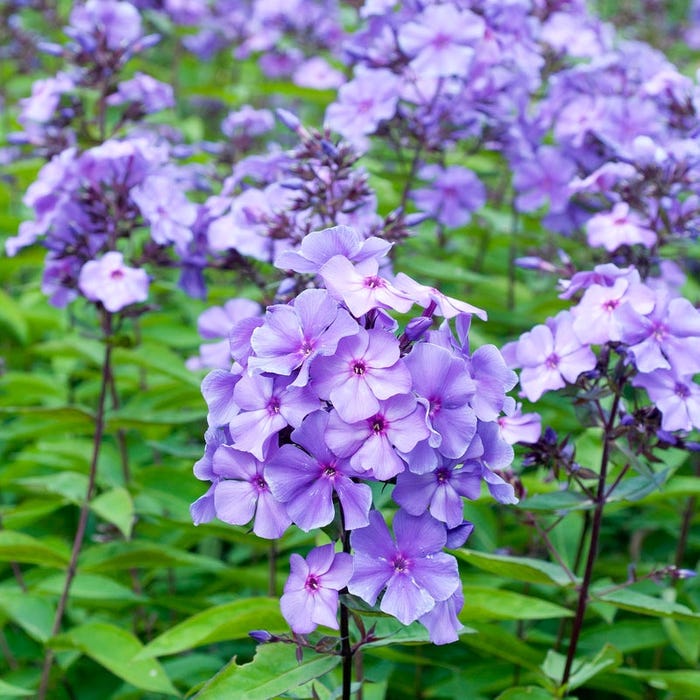One of the stalwarts of the English cottage garden in July is the Border Phlox. Those sturdy, upright stems with their spicy scented flowers have been a favourite since Victorian times. Phlox paniculata was introduced into the UK from the USA in the early 1800s as a garden plant. It originates in the eastern states of North America, growing at the edge of woodland, often on the banks of streams, which indicates their preferred environment: rich but draining soil, in sun or a little light shade.
Over the years the old cultivars have often succumbed to mildew in a close, damp summer, and more seriously, to Phlox Stem and Leaf Eelworm. This manifests itself on the plant as brown, twisted leaves, and sometimes split stems. The only recourse is to dig it up, bag it, and bin it. The eelworm does not affect the roots, so root cuttings can be taken in late winter, with moderate success.
But far better, and more successful, would be to clear a different area of the border in winter (it’s too easy to leave a little bit of stem or leaf in the soil), incorporate lots of organic matter and plant some of the gorgeous new varieties. These are often more mildew-resistant, and providing they are bought from a professional grower they should be clean of eelworm.
Of the new varieties there are one or two that are becoming very popular, and with good reason. Phlox paniculata ‘David’ is a highly-scented, strong-growing variety that is resistant to mildew and its porcelain white heads repeat until the autumn.
Phlox paniculata ‘Rosa Pastell’ carries large loose heads of pale, flesh pink flowers from darker buds until September. It has an especially strong perfume, is vigorous and easy to grow. And Phlox ‘Blue Paradise’ is especially sought after for its ‘blue’ flowers, the colour of a stormy sky at dusk. It marries well with the mauve spikes of Veronicastrum virginicum, and is exceptional with pink forms of Hydrangea macrophylla in a little light shade.
Once the early summer bloomers are over: the Iris sibirica, the early Thalictrums; and the first Geraniums and perennial poppies, have been cut back, then clumps of tall Border Phlox will carry the border through into the autumn, filling the garden with that unique scent, humming with bees, and dancing with butterflies.
Sally Gregson
July 2019
http://www.millcottageplants.co.uk

